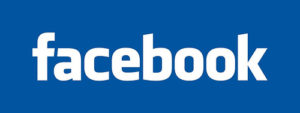Facebook
Facebook is the world’s largest social media platform, with over 500 million active users including individuals and corporations. The ability to create Group, Fan, and Cause pages has revolutionized the use of Facebook from a simple way to connect with friends to a key tool for companies and individuals to engage in continuous dialogue about issues, products, and news.
Facebook is an effective way to share articles, updates, message members who ‘like’ your page, create events, and share pictures.
If you need some ideas on how to get started on Facebook, check out their non-profit guide.
What Facebook is Good For
Facebook’s intuitive interface and centralized design means that setting up a page for a nonprofit organization is both simple and straightforward. Its huge user base and constant media attention also means there is a very shallow learning curve – chances are good that many staff at your organization already use Facebook extensively. There is also very little education that you will need to do for your audience.
Facebook has many strengths. For nonprofit organizations, these strengths include the following:
Awareness Building
As Facebook continues to grow in ubiquity, a nonprofit page ensures that users will be able to find your organization. A page will allow your organization to connect with your supporters where they spend their time. It will also give your organization a further opportunity to spread the word about the benefits of the Weatherization Assistance Program.Driving Conversation and Feedback
Given Facebook’s comment features, its users are comfortable and willing to provide feedback on an organization’s updates. Fostering conversations through open ended questions and provocative updates is a key method to keep your Facebook fans engaged with your organization.Driving TrafficCurrent research suggests that Facebook users are becoming more comfortable leaving the confines of the site to read links, information, and articles. Nonprofit organizations can take advantage of this flexibility by creating updates that feature links back to their website.Event AttendanceFacebook’s event tools allow you to spread the word easily about upcoming events to fans of your page. While it does not offer ticket sales functionality, for free events it can be a good way to track attendance. In order to be effective, an organization must have a large group of local supporters who have already become fans.FundraisingCurrently, it seems unlikely that Facebook will ever become a core part of a nonprofit organization’s fundraising strategy. However, Facebook does allow 501(c)(3) organizations to create a “Facebook Cause” which will allow fans to solicit donations from their friends on behalf of organizations they support. Given its low response rates, this should be seen more as another avenue for awareness building rather than a source of operating funds for your organization.
What It’s Not Good For
While Facebook can be a powerful tool for nonprofit organizations to engage supporters, it has significant drawbacks and challenges which nonprofit organizations must overcome in order to be successful.
Message ControlEngaging in a robust conversation online is a double-edged sword. It is critical to gauge your organization’s comfort level with your message being reinterpreted by hundreds if not thousands of individuals across Facebook’s platform. It is also important to have clear guidelines for dissenting opinions and a firm plan for dealing with off-topic and offensive comments.Online AdvocacyWhile some peer-to-peer fundraising is possible on Facebook, online advocacy remains a core deficiency in Facebook’s architecture. Time and again, Facebook’s users have proven unwilling to leave the confines of the platform to sign petitions, make phone calls, or other advocacy-related activities.ConsistencyFacebook’s suite of tools are subject to change without advance notice. This can present a challenge for staff tasked with maintaining and updating a page. While Facebook’s core functionality tend to stay constant, the way that users interact with organizations and pages often changes. It is important to stay abreast of changes by monitoring Facebook’s official blog.
To learn how to create a Facebook Page for your PIC campaign, download the Social Media Guide: Facebook.






